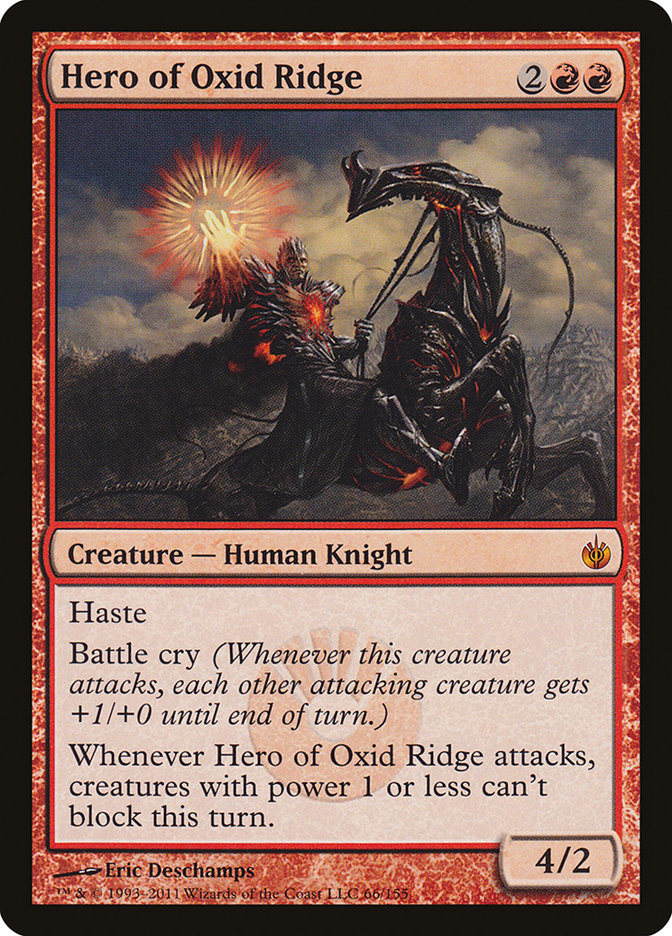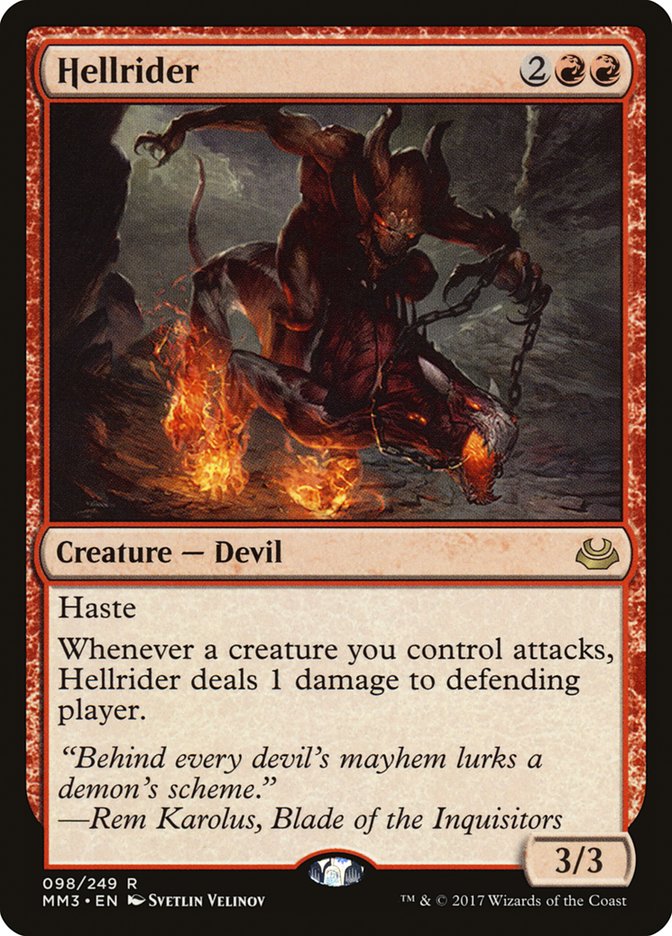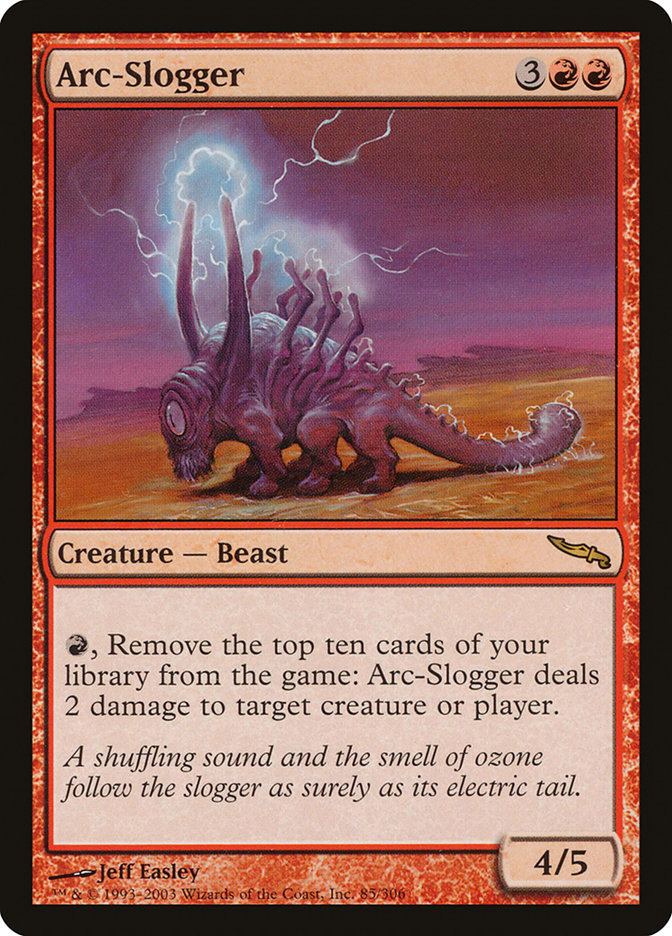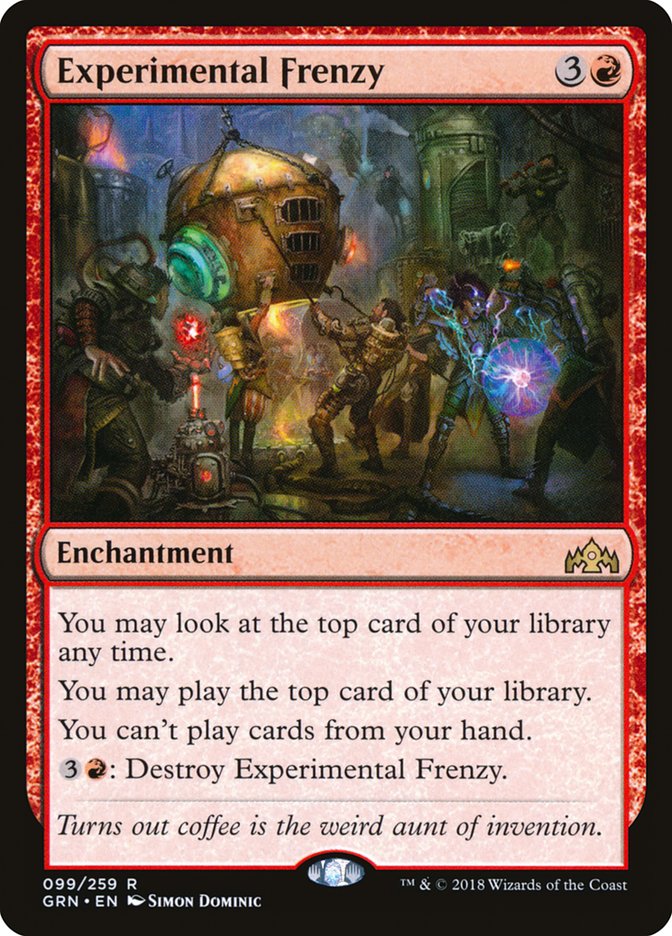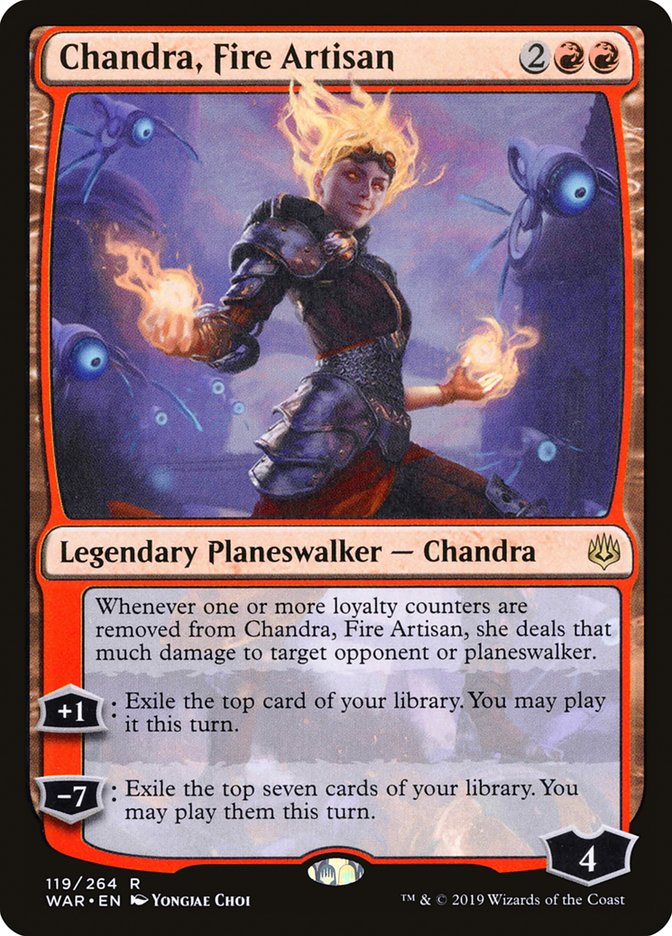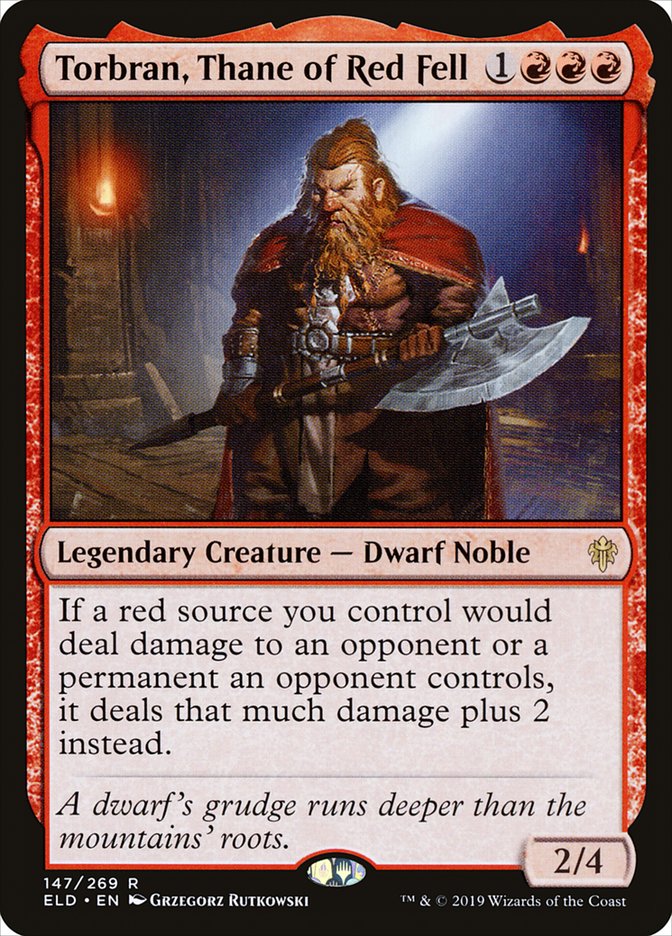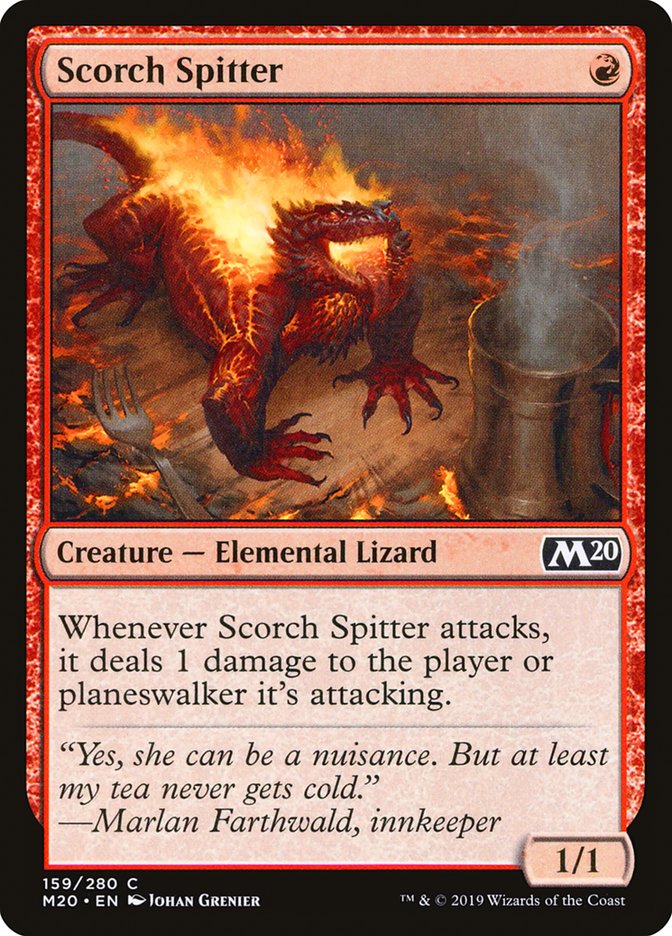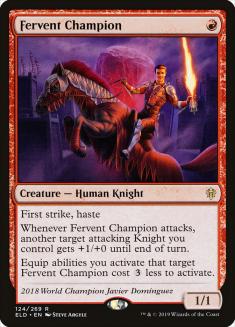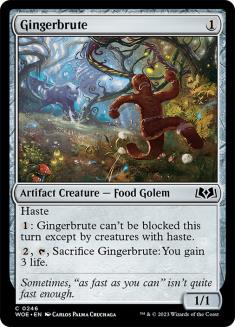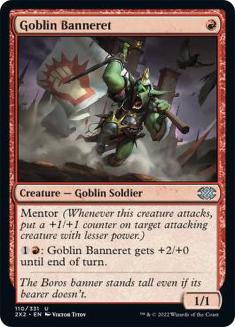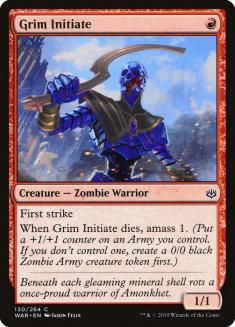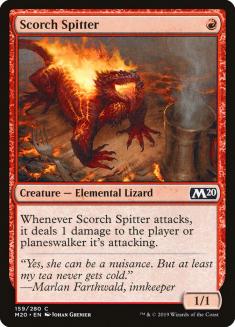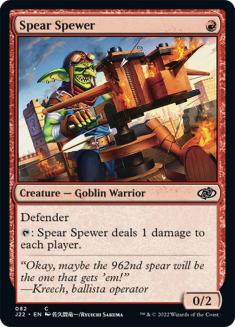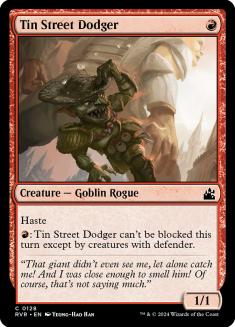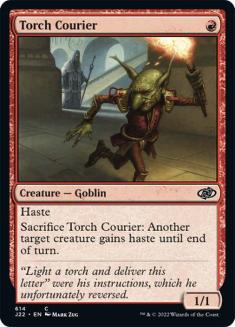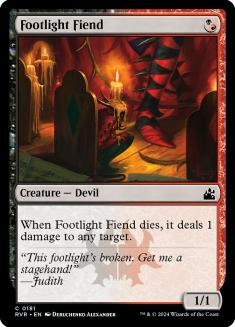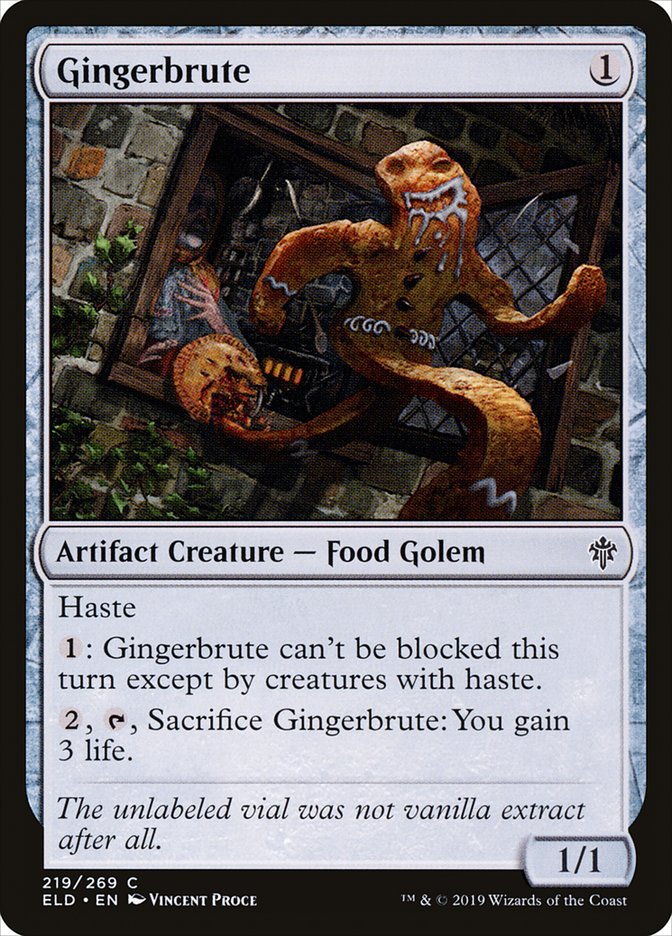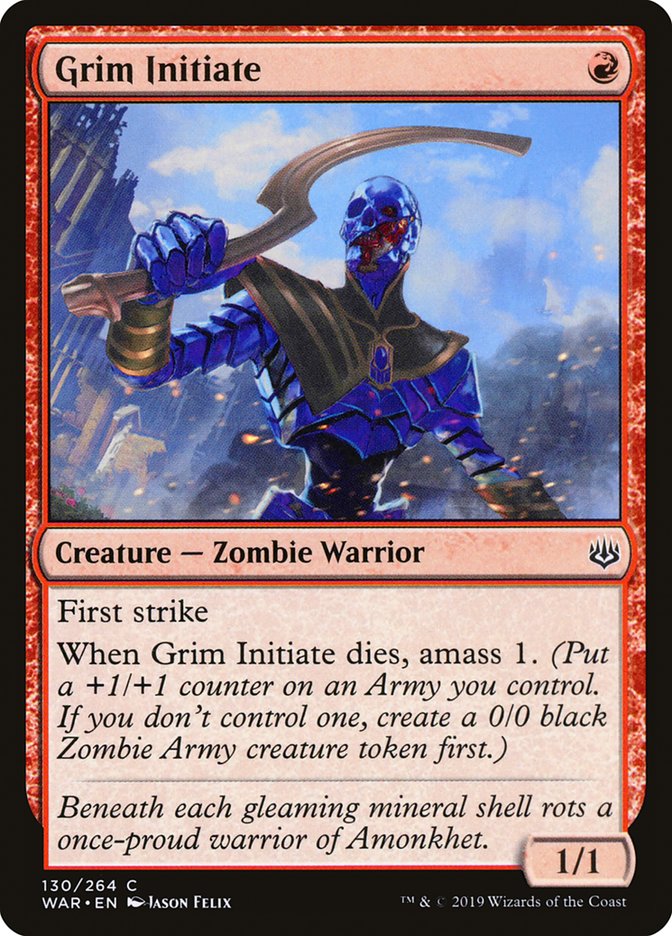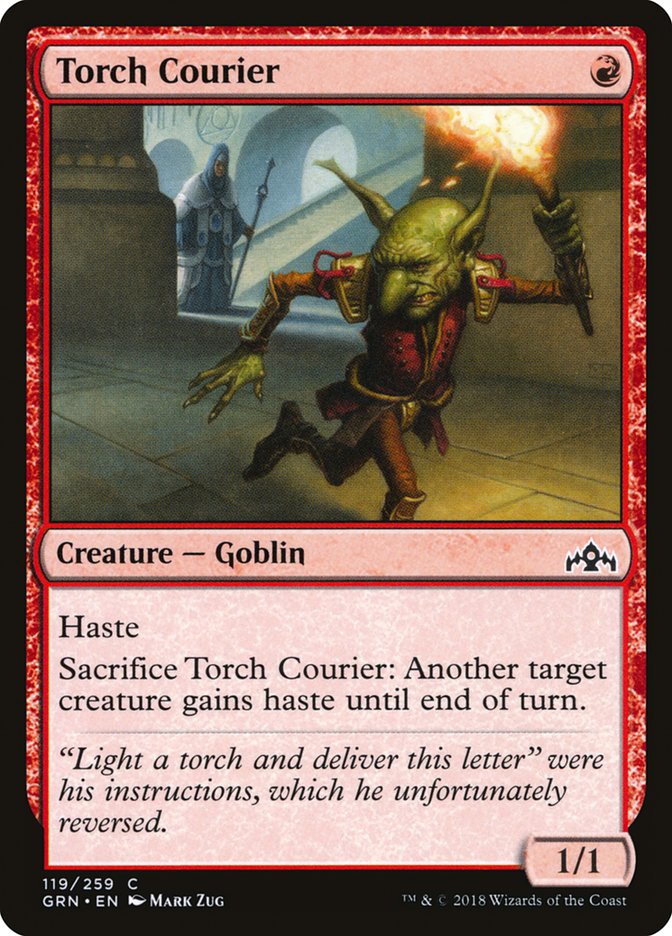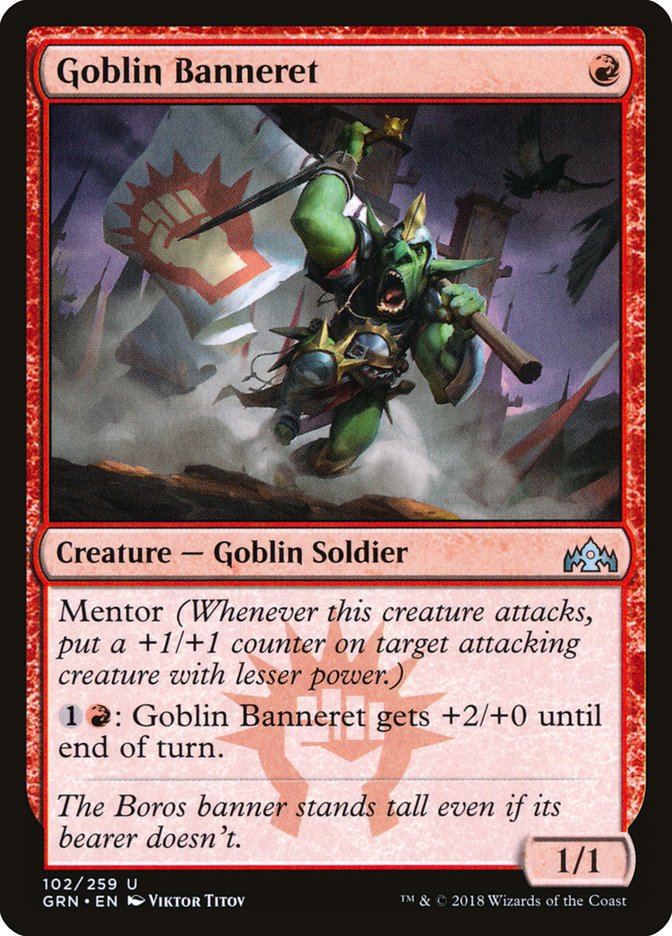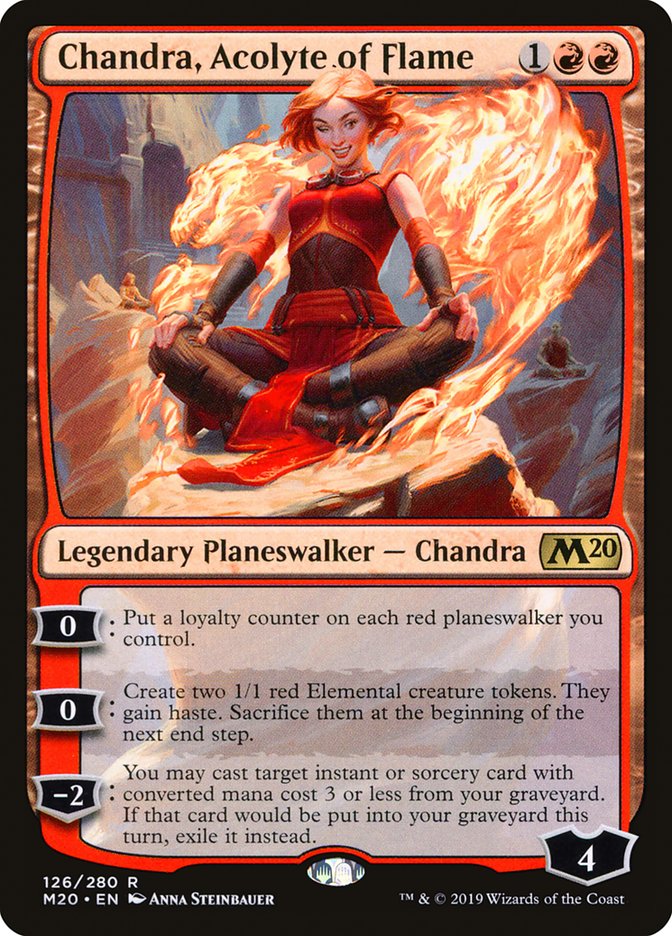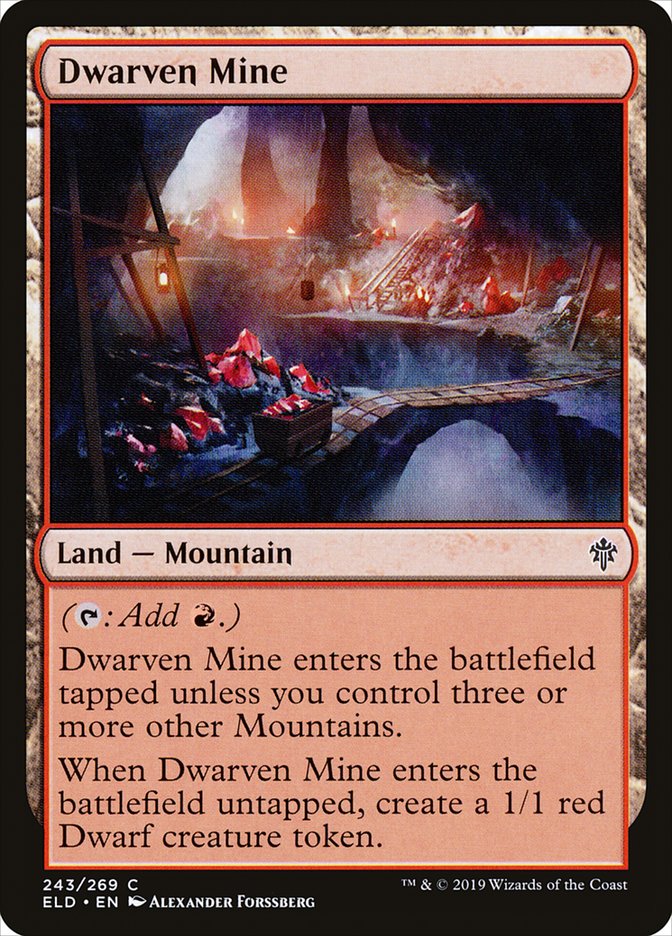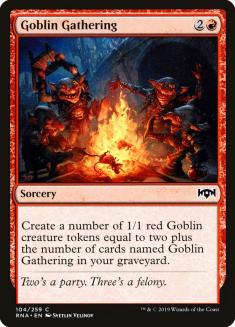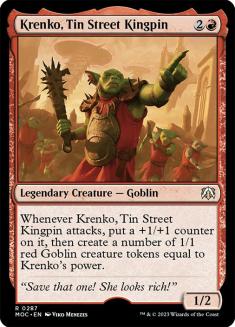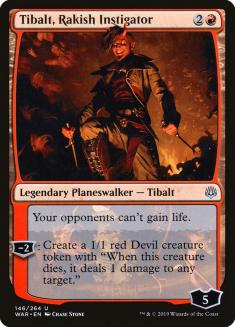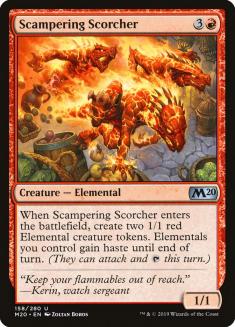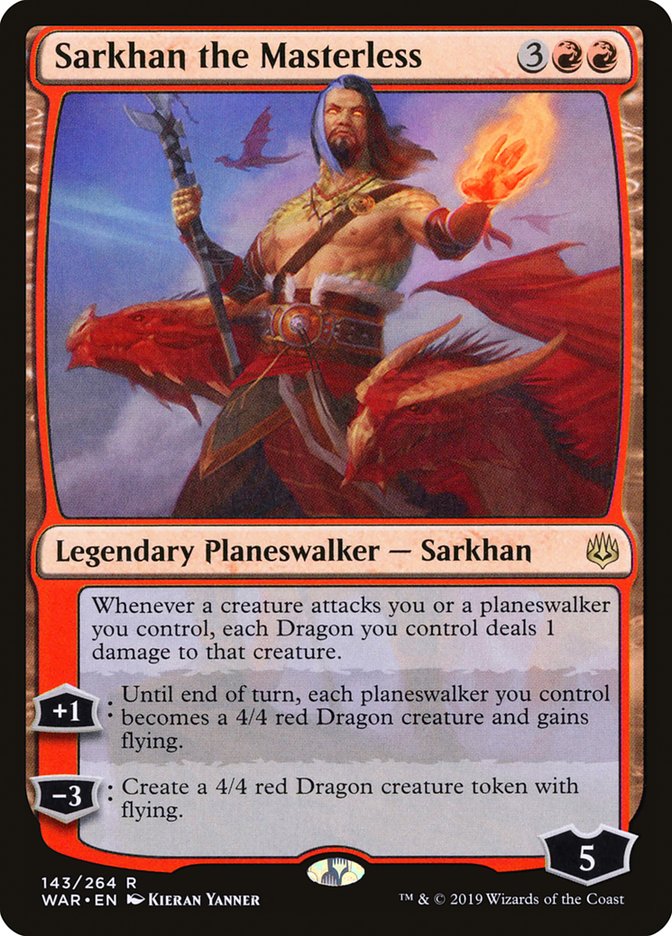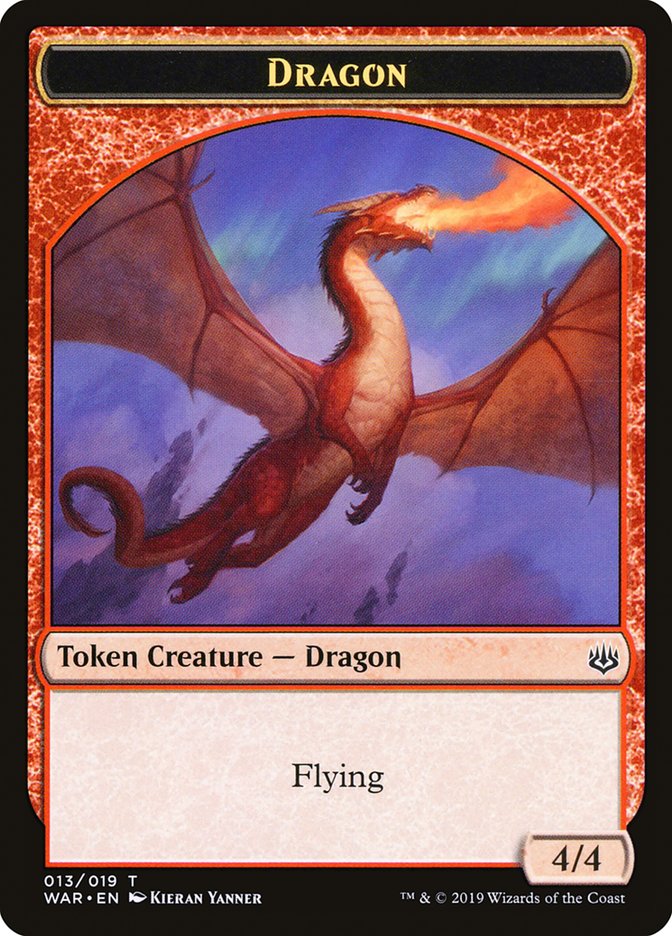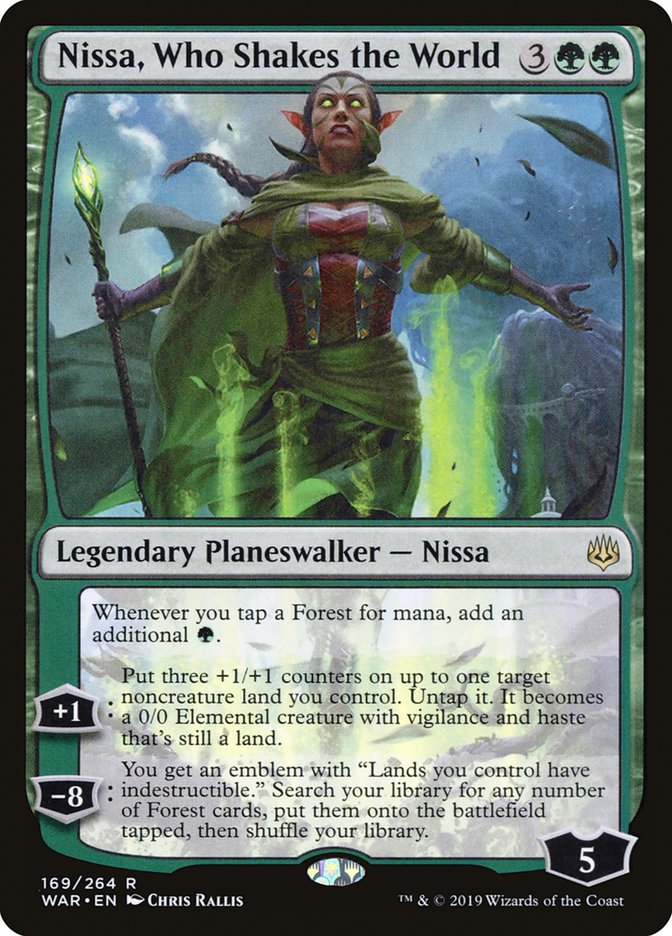The best red finishers always start off appearing innocuous.
When Hero of Oxid Ridge was first previewed, people were underwhelmed. It took a bit for people to realize that it was great at sneaking past Wall of Omens and Squadron Hawk.
Hellrider didn’t immediately catch on because Hero of Oxid Ridge already added damage to creatures and gave evasion. It took some time for the greater Magic community to realize that killing opponents before blocks had value.
Going even further back, Arc-Slogger was good for a few free copies of Shock as an activated ability. A few copies of Shock that also devoured its controller’s library, that is. Ten cards? Yeah, right.
Except cards in library don’t matter.
Except when they do.
When Guilds of Ravnica was released and rotation happened, people criticized Experimental Frenzy. “This isn’t Hazoret the Fervent. Who cares? Red deck is dead.”
Then someone pointed out that the cards that don’t matter are the ones in your hand, as long as you can chain spells off the top of your library.
When War of the Spark was released, Will Pulliam didn’t waste any time moving on to red’s newest finisher. Chandra, Fire Artisan didn’t stick around in decks forever, but her ability in conjunction with Experimental Frenzy was an innovation that paid off for Will in the form of a trophy:
Creatures (20)
- 4 Fanatical Firebrand
- 4 Ghitu Lavarunner
- 4 Goblin Chainwhirler
- 4 Viashino Pyromancer
- 4 Runaway Steam-Kin
Planeswalkers (4)
Lands (20)
- 20 Mountain
Spells (16)

All of this is to say that people are rewarded for adapting to new red curve-toppers sooner rather than later. Throne of Eldraine is no different.
Torbran, Thane of Red Fell may look innocuous at a glance, and it’s easy to pass over. He doesn’t do anything when he enters the battlefield and doesn’t have any sort of built-in card advantage, but red isn’t always about card advantage, is it?
A long time ago, Mike Flores penned an article on The Philosophy of Fire. The short version of the theory it talks about is how much damage a single card is worth. After all, most Burn decks don’t operate under the same logic that we apply to other archetypes, in terms of card advantage. When looking at things through this lens, Torbran is worth several cards.
It just takes a little bit of building around.
Torbran is the kind of card that is interested in rewarding a player that can deal damage with a red deck in a ton of little bits. This is because it generally isn’t going to care about how much damage is being dealt, just that it’s being dealt at all.
This means that dealing seven damage with a single source is going to be worth nine points of damage with Torbran. But dealing one point of damage seven times is going to be worth 21! So what does a deck built around Torbran look like?
Creatures (20)
Planeswalkers (3)
Lands (21)
Spells (16)

There are a few things going on in this deck, but the main idea is that outside of Runaway Steam-Kin, Shock, and Skewer the Critics, most things are dealing damage in smaller increments.
The first thing to note about Torbran is that it not having any immediate effect on the battlefield when he resolves means that things need to be on the battlefield before he’s cast. That should influence our deckbuilding to lean away from instants and sorceries and towards permanents that deal damage, unlike the burn-heavy decks we’ve seen for the last year or so.
Cavalcade of Calamity in particular has been impressive in its own right but is absolute nonsense when paired with Torbran. Normally a card that’s been paired with over-the-top token strategies, with the loss of Ghitu Lavarunner and Viashino Pyromancer, Cavalcade of Calamity is a natural fit with the new direction for the red deck as a reliable source of damage.
Of all the reasonable one-drop creatures that are realistically available to include in this archetype, they all happen to look great with Cavalcade:
Spear Spewer has ended up in the decklist itself as a concession to its natural synergy with enabling the spectacle mechanic pre-combat, but could very easily end up being incorrect.
Of the other available options, Gingerbrute is the most conflicting one. Despite how the card feels, it isn’t actually red, and Torbran is a bit of a stickler for that specific detail.
That being said, it is more evasive than the rest of the bunch.
The biggest issue with Grim Initiate is that it is pretty close to an Eager Cadet with the upside of working with Torbran that spits out a literal Eager Cadet when it dies. First strike on a 1/1 without a bunch of ways to give it more power isn’t going to do that much.
Without anything much bigger to toss haste onto, Torch Courier is a Gingerbrute with less evasion and more Torboran-fueled synergy.
Goblin Banneret is one of the more conflicting options available to the deck. Having the option of growing other creatures is going to feel like its own flavor of Cavalcade at times. The biggest issue is that Goblin Banneret is frequently going to exacerbate the good and bad matchups for the deck.
That’s to say that the decks that aren’t good at answering Goblin Banneret are going to be a good matchup for the aggro deck with a dozen one-drop creatures. On the other hand, Goblin Banneret is going to be pretty embarrassing against the decks that have game against small-ball creatures. It not doing anything during the turn it enters the battlefield is a real liability in these situations and takes away from the reach that the deck is trying to get out of cards like Cavalcade and Torbran.
Chandra, Acolyte of Flame offers another plan for Torbran: tokens.
In this particular version of the deck, she’s a natural fit: she flashes back the same spells she’s been casting for a few months now, and she makes a bunch of one-power creatures to trigger Cavalcade.
She isn’t the only thing that does this with Torbran. What about a bigger red deck with Torbran?
As soon as a monocolored deck is more interested in playing a bunch of lands over the course of a game, the kinda-free-but-not-really lands with basic land types start becoming more attractive. Dwarven Mine in particular plays well with everything that we’ve been talking about. It’s almost like it wasn’t an accident that it played well with the Dwarven king….
Last Standard season, it was common for red decks to morph into a strategy that simply played a pile of high-impact, proactive threats and forced the opponent to answer every single one of them or run the risk of falling so far behind that they would never catch up.
Token producers are among the ways to get a sort of proactive card advantage. How lucky.
The general tradeoff that this type of strategy will make is in its curve. Cards that cost more mana are going to be more powerful than their cheaper counterparts, but it becomes harder to justify cards like Spear Spewer in a deck with a bunch of four-drops.
Sarkhan the Masterless presents another interesting option for something like Torbran, and a part of his text that hasn’t yet been touched on in this article: he also cares about damaging the opponent’s permanents.
This means that Sarkhan’s triggered ability can create a sort of Moat effect that makes it difficult for opposing creatures to attack without dealing with what’s on the battlefield first.
After realizing this synergy, the knee-jerk reaction is to immediately think things to the effect of “Okay, but keeping a four-mana creature, a 4/4 flying Dragon, and a five-drop planeswalker on the battlefield means that you’re probably already winning, right?” That isn’t necessarily the case.
There are plenty of decks that are base-green and don’t interact very much. Why? Because they think they can simply win a long game as long as they can power through whatever tries to interact with them. The best way to beat these go-big strategies is to simply punish them for refusing to interact.
Big Red strategies in particular have historically done well against these non-interactive synergy decks because there’s just enough interaction to beat a couple of early Walls and the cards are powerful enough to win in the mid-game. That way, things like 8/8 Hydroid Krasises don’t end up having much say in who wins.
Throughout the upcoming Standard format, figuring out how to build the best Torbran deck is going to define the color red. When evaluating cards for your aggro decks, think of things through the lens of:
- How many instances of damage is this card going to deal?
- Is this a form of damage that I can deploy around Torbran?
It doesn’t always need to be fast, and it doesn’t always need to be small. It just needs to be red, and it needs to deal damage.
It really is that easy.


